Spring Branch Tree Trimming: When is the Best Time?
In Spring Branch, TX, tree trimming is essential for maintaining the health and appearance of your trees. The best time to trim varies depending on the species, but for most trees, late winter to early spring is ideal. Pruning trees regularly not only enhances the aesthetic appeal of your landscape but also promises the safety of your property. For professional tree trimming services in Spring Branch, TX, consider J & J Tree Care Professionals, who have the expertise and equipment to properly prune trees of any size and species.
Key Takeaways
- The best time to trim trees in Spring Branch, TX, varies by species, but generally, late winter to early spring is ideal for most trees.
- Tree trimming is essential for maintaining the health, safety, and appearance of your trees.
- Professional arborists, like J & J Tree Care Professionals, have the expertise and equipment to properly prune trees of any size and species.
As the seasons change in Spring Branch, TX, the time to focus on the health and appearance of your trees is now. But when exactly is the best moment to trim those branches for optimal growth and vitality? Understanding the right timing can be the difference between flourishing trees and lackluster landscapes.
Benefits of Regular Tree Trimming in Spring Branch, TX
Tree trimming is an essential aspect of tree care that offers numerous benefits for your Spring Branch landscape. Here are some key advantages of regular tree trimming:
- Promotes healthy growth by allowing sunlight and nutrients to reach the living parts of the tree.
- Maintains the tree’s structural strength, minimizing the risk of falling branches during inclement weather.
- Removes dead or diseased branches, preventing the spread of decay and protecting the tree’s overall health.
Best Time-of-Year to Trim Trees (By Type)
When it comes to tree trimming, understanding the needs of specific tree species is very important. In Spring Branch, TX, and the surrounding San Antonio area, the timing for pruning can significantly affect the health and productivity of your trees. Let’s delve into the best times to trim some common tree species in our region.
1. Oak Trees
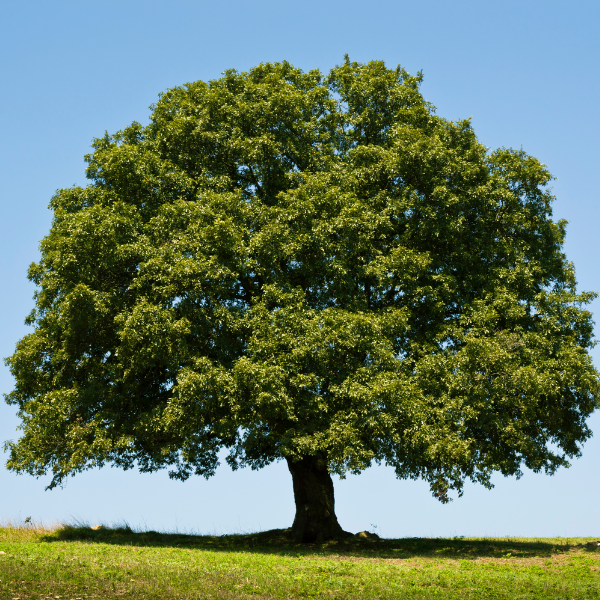
Oak trees are a staple in Texas landscapes, but they require careful timing when it comes to trimming to prevent the spread of oak wilt, a deadly fungal disease. To ensure optimal tree health, it is recommended to prune oak trees during their dormant phase, which occurs in the late winter or early spring months, prior to the emergence of new growth. This timing minimizes the risk of disease transmission and allows the tree to heal before the growing season.
Best time to trim: Late winter or early spring.
2. Apple Trees

For apple trees, the key to successful pruning is after the coldest part of winter has passed but before spring growth kicks in. This typically falls between late winter and early spring. Proper pruning is essential for apple trees, not only to maintain their shape and size but also to encourage fruit production and allow sunlight to penetrate the canopy.
Best time to trim: Late winter or early spring.
3. Maple Trees
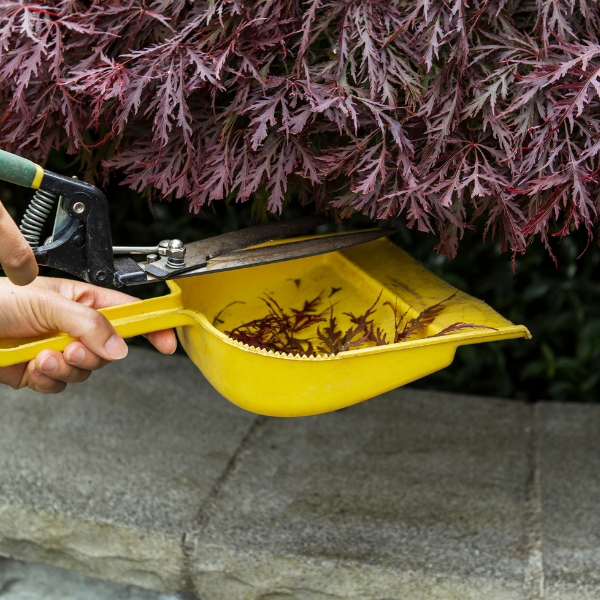
Maple trees, known for their stunning fall foliage, also benefit from pruning in the late winter to early spring timeframe. Pruning maples during this period helps prevent excessive sap loss, which can occur if pruned in late spring or summer. In addition, the tree’s winter hardiness is not compromised, allowing for vigorous spring growth.
Best time to trim: Late winter to early spring.
4. Fruit Trees
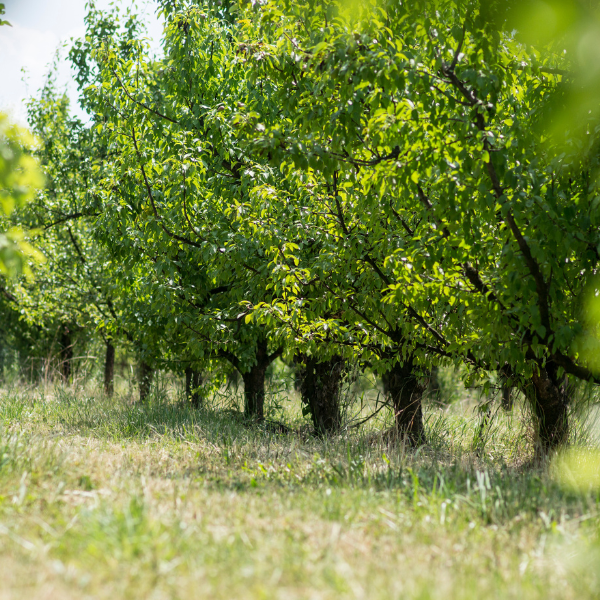
Most fruit trees, including pears, plums, and cherries, should be pruned in late winter or early spring. Pruning fruit trees during this time promotes a strong structure, improves air circulation, and enhances sunlight exposure. All of these things contribute to a better fruit yield. Summer pruning can be done to remove water sprouts and direct growth as needed.
Best time to trim: Late winter or early spring.
5. Crepe Myrtles
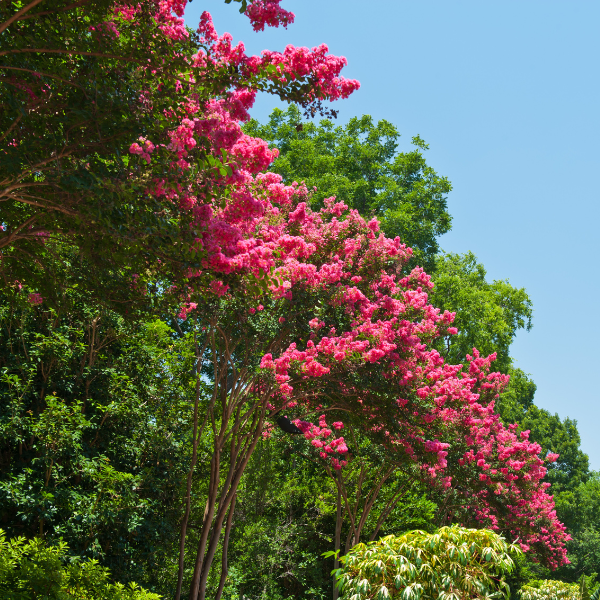
Crepe myrtles are beloved for their long-lasting summer blooms. To avoid cutting off flower buds, prune in late winter or very early spring before new growth starts. This guarantees you’re only removing excess or dead branches, allowing the tree to channel energy into producing its vibrant flowers.
Best time to trim: Late winter or very early spring.
6. Peach Trees
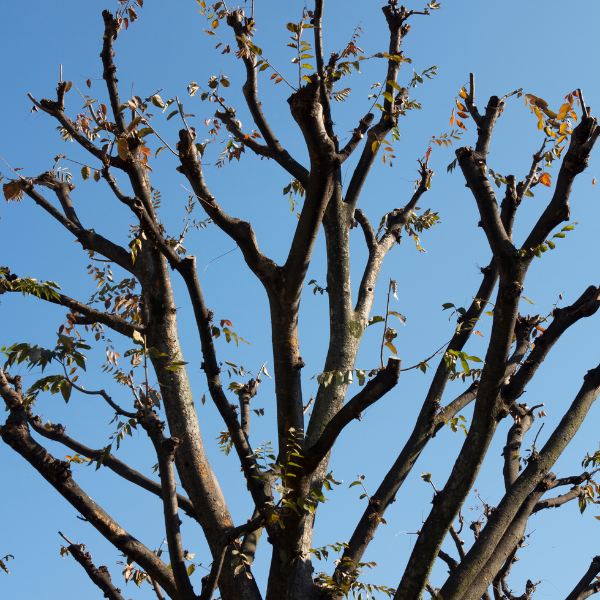
Peach trees require careful pruning to produce the best fruit. The ideal time to trim peach trees is in early spring, just as the buds begin to swell. This allows you to clearly see which branches are healthy and which ones need to be removed, making sure that the tree devotes its resources to producing high-quality peaches.
Best time to trim: Early spring.
DIY Tree Trimming vs. Hiring Professionals
While DIY tree trimming may seem cost-effective, it can be risky and may not yield the best results for your trees’ health and safety. Professional arborists, like our team at J & J Tree Care Professionals, have the expertise and equipment to properly prune trees of any size and species. We understand the unique growth patterns and potential hazards associated with each tree type.
Contact Us for a Free Quote
With our deep roots in the San Antonio community and our commitment to preserving the natural beauty of your landscape, we’re here to provide expert advice and service. Call us at (210) 914-6619 or fill out our online form to get started with your free quote!
Commercial Tree Trimming: For Texas Businesses
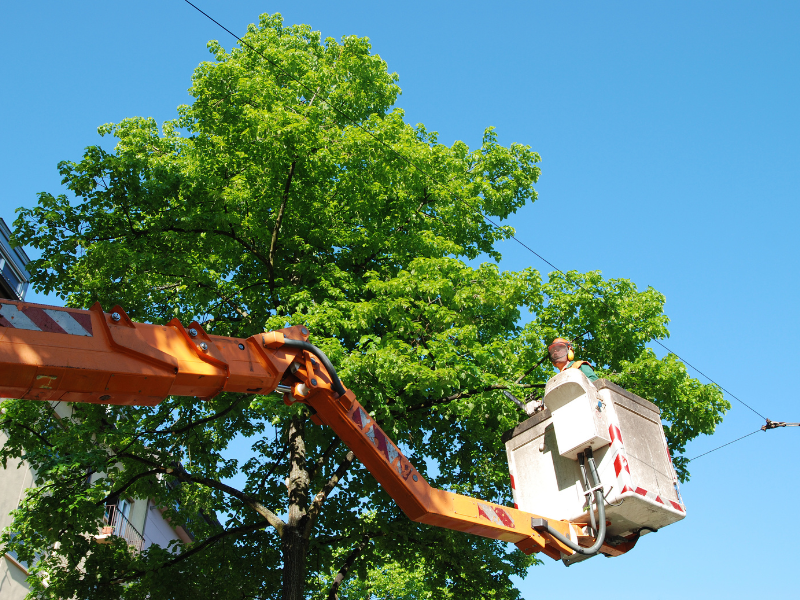
For businesses in Spring Branch and the greater San Antonio area, maintaining a professional appearance is key—and this extends to the greenery that surrounds your commercial property. Our commercial tree trimming services not only enhance the aesthetic appeal of your premises but also guarantee the safety of everyone on-site. Learn more about our commercial tree trimming services here.
Tree Service Timing FAQs
When can you trim trees in Texas?
In Texas, you can generally trim trees at any time of the year, but the best time varies depending on the species. For most trees, late winter to early spring is ideal, as the trees are dormant and the risk of disease or pest infestation is lower. It’s also easier to see the tree’s structure without leaves, allowing for more precise pruning.
Who do I call to trim trees around power lines?
If you notice trees encroaching on power lines, it’s important to contact your local utility company rather than attempting to trim them yourself. Utility companies have trained professionals who can safely manage trees near power lines.
Is it okay to trim trees in May?
Trimming trees in May is generally okay for most species, but it is past the ideal pruning window for certain types, such as oak trees, which are best pruned in late winter to early spring.
Is April too late to prune?
For many tree species, April is not too late to prune, especially if you are aiming to shape the tree or control its size. However, for trees that are susceptible to diseases that spread during the spring, such as oaks, it’s better to prune them when they are dormant.
Is May too late to prune?
May is considered late for pruning some species, as it can interfere with the tree’s natural growth cycle. However, light pruning and the removal of dead or diseased branches can be done at any time. It’s best to consult with a professional to determine the right timing for your particular trees.
Is it OK to prune in the summer?
Summer pruning is okay for certain corrective purposes, like removing water sprouts or directing growth. It’s also a good time to prune fruit trees to encourage fruiting. However, avoid heavy pruning during the summer, as it can stress the tree during a time of active growth.
